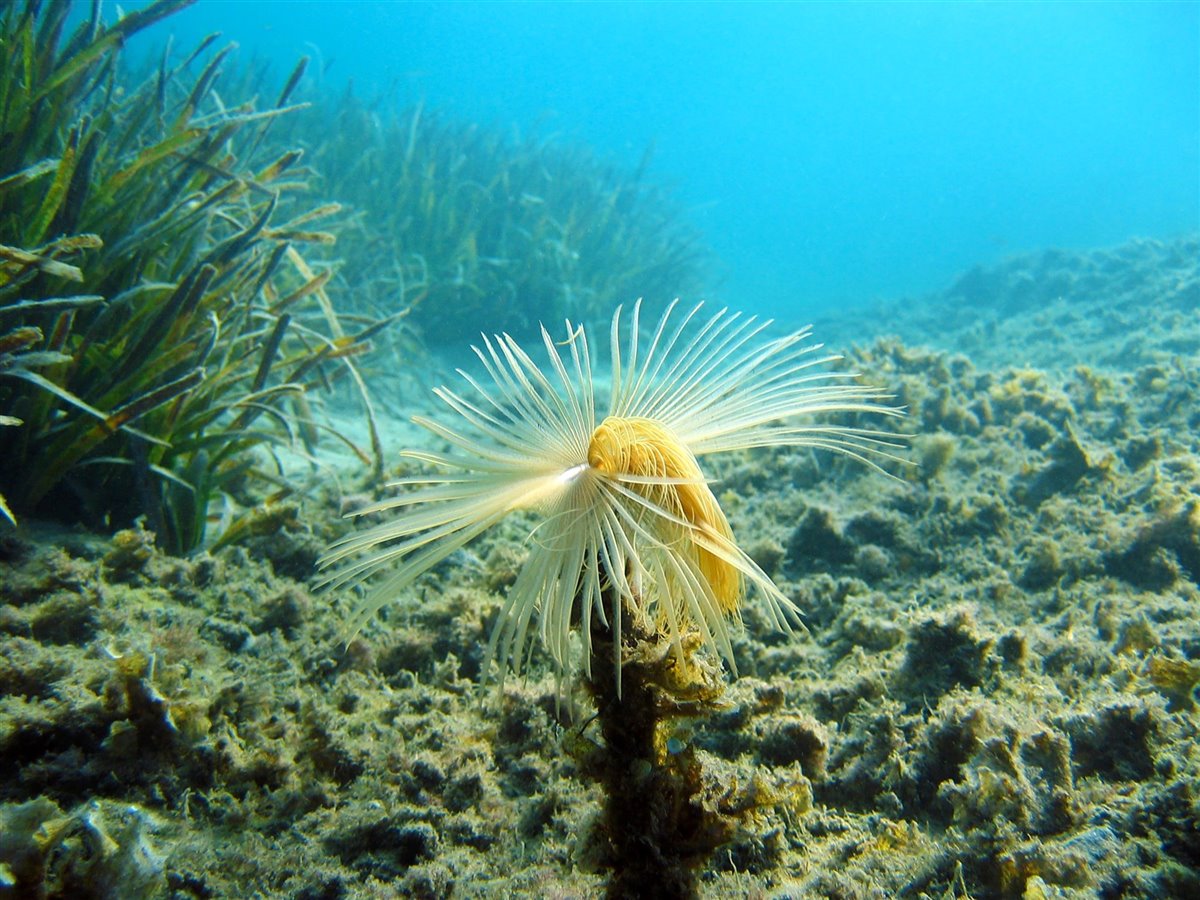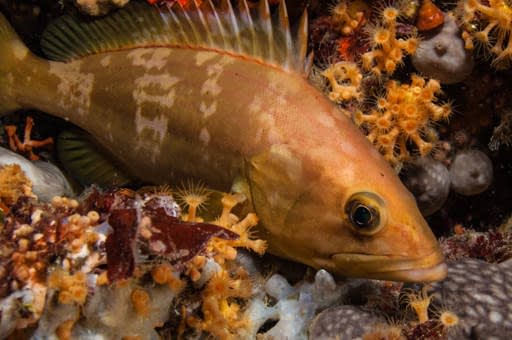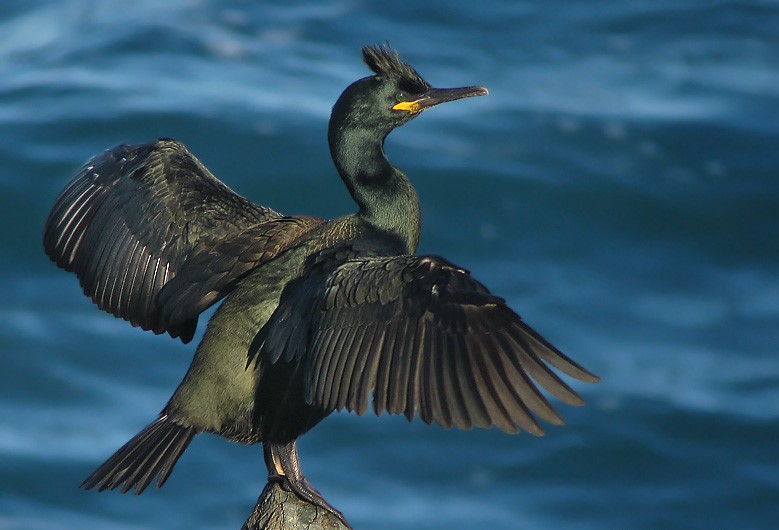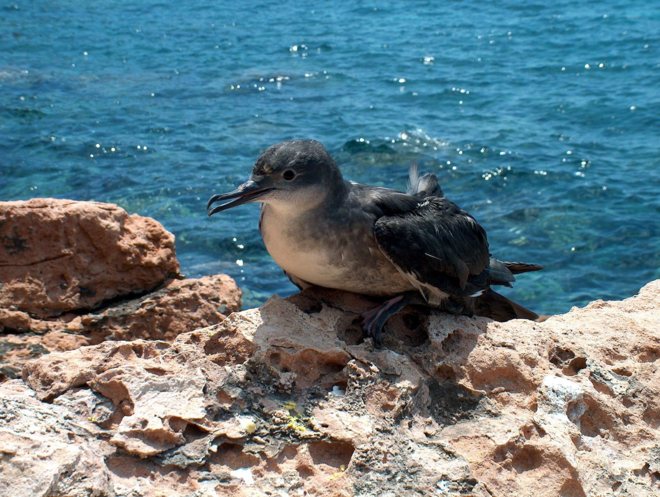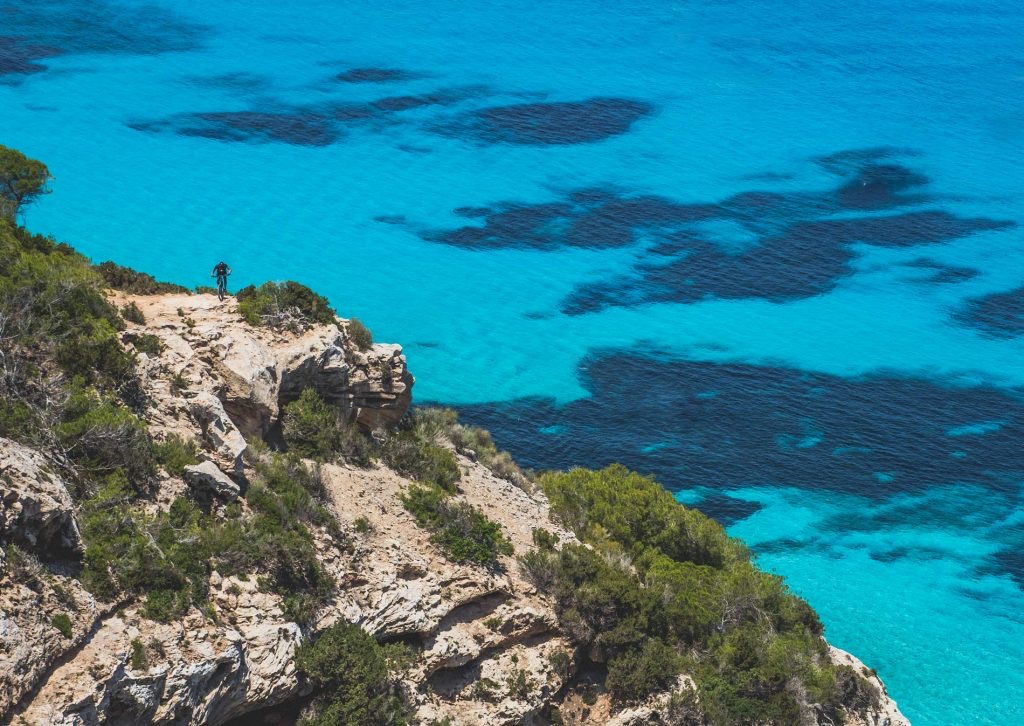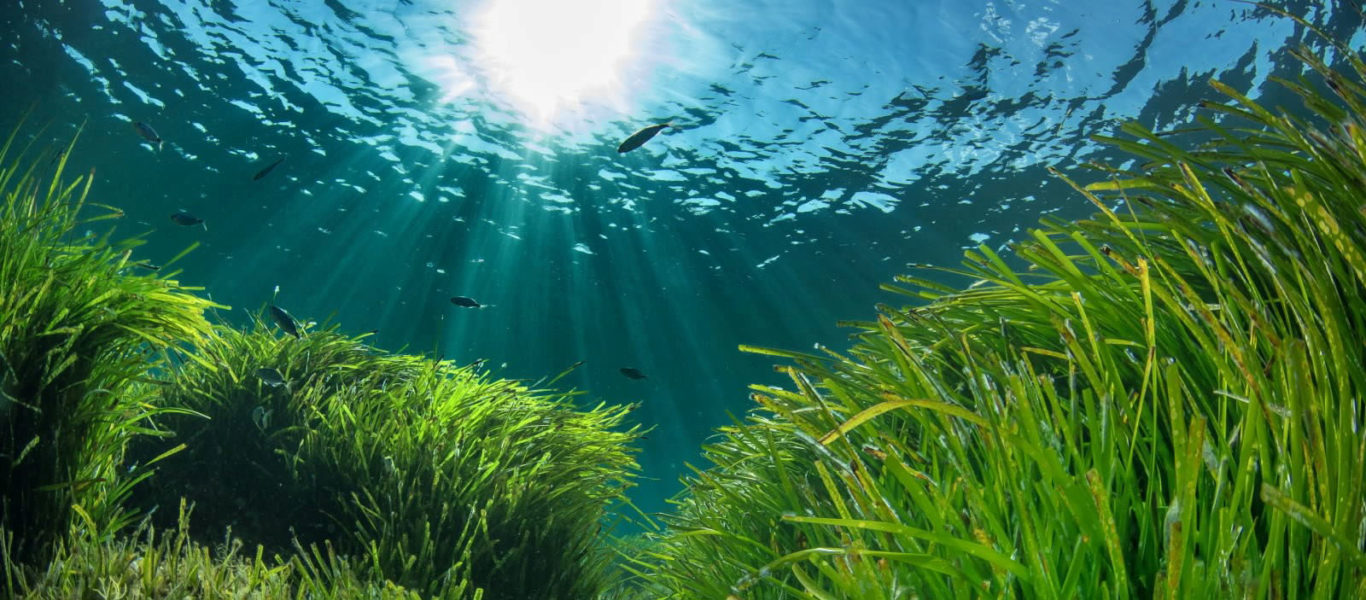
SAVE THE POSIDONIA
The largest and longest living organism in the world
An essential marine plant
Although its appearance and its location at the bottom of the sea could make us think that it is an algae, Oceanic Posidonia is a superior plant and probably the most important plant in the Pitiusas marine ecosystem.
Posidonia meadows are an endemic species of the Mediterranean Sea that is not present in any other sea in the world. We can find it between the surface level up to 30-40 meters deep depending on the transparency of the waters, occupying large areas in the Mediterranean coast. It is an endemic species of the Mediterranean and, since 1999, specifically, the meadow of the Natural Park of Las Salinas in Ibiza and Formentera was declared a World Heritage Site.
Unlike algae, it has leaves, stem and roots, in addition to producing flowers and fruits. It grows both in rocky funds and in mobile funds, that is, sandy, while algae only do so in hard or rocky bottoms.
This plant plays an important role in sedimentary dynamics, since they keep the sediment still with its roots and creates important areas of oxygen production, breeding and refuge of many animal species. It is estimated that more than 400 plant species and 1,000 animals inhabit the posidonia meadows. On the other hand, the prairies function as large filters, helping to keep the sea water clean and transparent. Likewise, the posidonia berms in the sand prevent erosion of the beaches.
One of the most outstanding characteristics of this plant is that it is fixed to the substrate through rhizomes capable of extending several kilometers, producing millions of plants from the same clone. Posidonia specimens separated more than 15 kilometers from the same plant have been found, which has led scientists to estimate the age of this plant at 100,000 years, being the longest living being on the planet.
The oceanic posidonia is a plant very sensitive to pollution, so it is considered a good bioindicator of water quality. The increase in pollution on the coast has caused a considerable reduction of the grasslands, although with the construction of treatment plants and quality control systems it seems that this decrease is stabilizing.
This plant, so essential to maintain the biodiversity of the Mediterranean Sea, is cataloged by CITES and included in the List of Wild Species under Special Protection Regime in the Mediterranean.
The Balearic Islands have an area of 55,795 hectares of Posidonia grassland, of which 7,650 hectares correspond to the waters of Formentera. This translates into 76.5 million square meters to protect only in Formentera.
This plant plays an important role in sedimentary dynamics, since they keep the sediment still with its roots and creates important areas of oxygen production, breeding and refuge of many animal species. Its presence allows many marine species to establish their home in the waters of Formentera.
It is estimated that more than 400 plant species and 1,000 animals inhabit the posidonia meadows. On the other hand, the prairies function as large filters, helping to keep the sea water clean and transparent. Likewise, the posidonia berms in the sand prevent erosion of the beaches.
Recent studies have shown that, the anthropic impact caused by boats of different lengths on the Posidonia meadows, has caused a drastic reduction of up to 44% of the oceanic Posidonia meadow in the northern area of Formentera, which implies an extension of 0.59 km2, mainly due to the fall and hoisting of the anchor, as well as the effect of the plowing caused by the garreo of these vessels and the erosive effect of the chain as a result of the borneo. This fact affects seabirds fundamentally, indirectly, by causing damage to the benthic communities, especially the Mediterranean molten cormorant, due to its coastal and scuba diving character, and due to its connection with posidonia meadows.
It is vitally important to raise awareness among tourism, and especially nautical tourism, of the importance of the conservation of this ecosystem of great biological diversity.
Provide information about the marine area of Formentera and Ibiza and the need to ensure the proper management of this space and the favorable conservation of seabirds that justify their incorporation into the Natura 2000 Network, such as the Mediterranean Cinderella Pardela, the Balearic Pardela, the Mediterranean moñudo cormorant and the Audouin gull, among others. What defines this habitat as of great ecological interest that, among other aspects, is fundamental for the feeding of certain seabirds, both native and migratory of regular presence.
Jacques-Yves Cousteau, the famous explorer of the sea, said a few decades ago: “We have turned water and air, the two essential fluids on which life depends, into global dumps.” It helped spread the environmental problems of the oceans and the need to protect them. However, since then in many ways the situation has only worsened. Especially in the Mediterranean, one of the most polluted and overexploited seas on the planet, subjected to constant and extreme stress.
This is confirmed by Manu San Felix, marine biologist and National Geographic Explorer based in Formentera, who for three decades has seen with his own eyes and through his inseparable camera the deterioration of this sea he loves so much. One of the Mediterranean species that San Félix knows best is Posidonia (Oceanic Posidonia), a very important plant for the proper functioning of the marine ecosystem: it is home to many organisms, contributes to the purification of water, generates large amounts of oxygen On the seabed, it acts as a carbon sink, prevents erosion on the coast and, in summary, clearly indicates the level of existing environmental quality.
The researcher Carlos Duarte explains that if the temperature exceeds 28.5 ° C, the mortality rates of the posidonia soar. Unfortunately, since 2015 there have been long periods in which, between 15 and 20 meters deep, the temperature does not fall below 29 ° C. For the communities of Posidonia, stressed by the anchorages and the discharges of dirty water, these very high temperatures are the coup de grace. If we do not get the most optimistic scenario outlined in the Paris Agreement, Duarte insists, that is, that the temperature does not rise more than 1.5 ° C above the reference values, it will be difficult to maintain the posidonia cover in the future.
What is the solution to such amount of excesses? According to Enric Sala, National Geographic explorer and creator of the Pristine Seas project, the key to recovering the health of the oceans is the protection of large marine areas. This project has already achieved the creation of 17 marine reserves across the planet, which means a protected area of some 5,000 million square kilometers that has allowed it to demonstrate that conservation is a phenomenal business. Making a simile with a bank account, the interests produced by a marine reserve in 10 years reach, on average, 600%. That is to say that “capital” (in this case, biodiversity) is multiplied by six, which indisputably favors both fishermen and the tourism sector.
But currently only 1% of the Mediterranean is protected. And that, according to experts, half should already be preserved and the other half, managed in line with the scientific data we have, which confirm that 95% of commercial species are overexploited, in some cases up to 10 times by on top of what would be appropriate.
Like Sylvia Earle, oceanographer and pioneer of the exploration of the seas, she often says: «No Blue, No Green. No Water, No Life »(« Without blue, there is no green. Without water, there is no life »). What needs to be done to internalize those responsible for the centers where decisions are made? It is possible that with powerful dissemination tools such as the documentary Save Our Mediterranean, by Manu San Félix, our managers realize once and for all an incontestable reality: “WE’RE AGAINST THE WATCH”.
Unfortunately, the Mediterranean Sea is the most overexploited on the planet and scientists keep asking themselves, what can we do to ensure its survival? Posidonia, an endemic aquatic plant of Mare Nostrum, could be the key to its recovery.
Do you have a boat and do not want to damage the posidonia?
The Govern de les Illes Balears has drawn up a map to guide boats. Posidonia mapping has been carried out by the LIFE POSIDONIA project and the Ministry of Agriculture, Food and Environment.
HELIX RENT A BOAT FORMENTERA
Puerto Deportivo Marina de Formentera, local 6, La Savina – Formentera (Islas Baleares)
Lat. 38º 44′ 2″ N / Long. 1º 24′ 55″ E
Telf. 0034 616 36 13 46
info@subcatformentera.com
SubCat Formentera © 2021
Legal Warning / Privacy Policy


